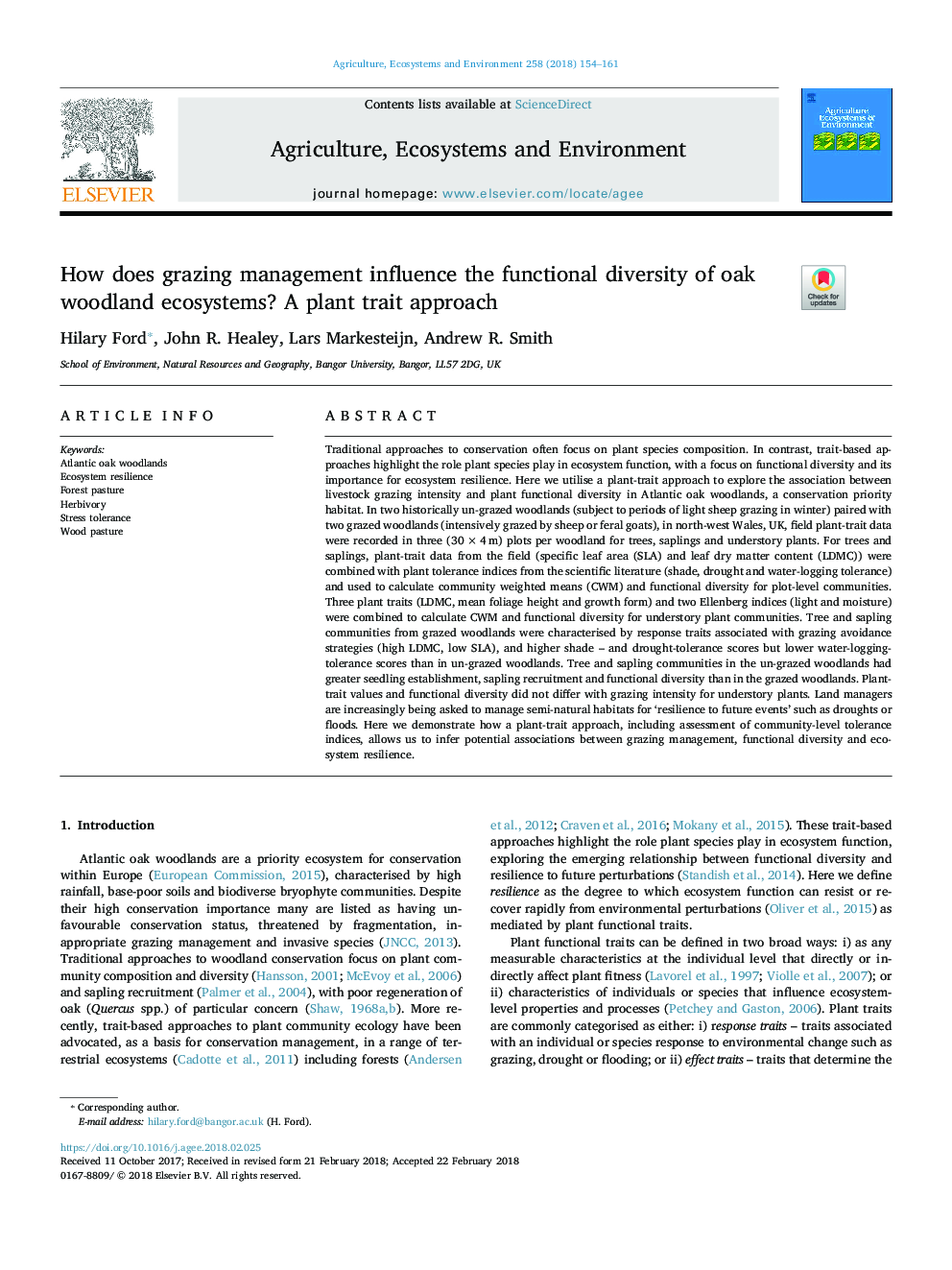| کد مقاله | کد نشریه | سال انتشار | مقاله انگلیسی | نسخه تمام متن |
|---|---|---|---|---|
| 8487125 | 1551994 | 2018 | 8 صفحه PDF | دانلود رایگان |
عنوان انگلیسی مقاله ISI
How does grazing management influence the functional diversity of oak woodland ecosystems? A plant trait approach
ترجمه فارسی عنوان
چگونه مدیریت چراگاه بر تنوع عملکردی اکوسیستم های جنگلی بلوط تاثیر می گذارد؟ رویکرد صفات گیاهی
دانلود مقاله + سفارش ترجمه
دانلود مقاله ISI انگلیسی
رایگان برای ایرانیان
کلمات کلیدی
جنگل های بلوط اقیانوس اطلس، انعطاف پذیری اکوسیستم، مرتع جنگل، گیاهخواری، تحمل استرس، مرتع چوب
موضوعات مرتبط
علوم زیستی و بیوفناوری
علوم کشاورزی و بیولوژیک
علوم زراعت و اصلاح نباتات
چکیده انگلیسی
Traditional approaches to conservation often focus on plant species composition. In contrast, trait-based approaches highlight the role plant species play in ecosystem function, with a focus on functional diversity and its importance for ecosystem resilience. Here we utilise a plant-trait approach to explore the association between livestock grazing intensity and plant functional diversity in Atlantic oak woodlands, a conservation priority habitat. In two historically un-grazed woodlands (subject to periods of light sheep grazing in winter) paired with two grazed woodlands (intensively grazed by sheep or feral goats), in north-west Wales, UK, field plant-trait data were recorded in three (30â¯Ãâ¯4â¯m) plots per woodland for trees, saplings and understory plants. For trees and saplings, plant-trait data from the field (specific leaf area (SLA) and leaf dry matter content (LDMC)) were combined with plant tolerance indices from the scientific literature (shade, drought and water-logging tolerance) and used to calculate community weighted means (CWM) and functional diversity for plot-level communities. Three plant traits (LDMC, mean foliage height and growth form) and two Ellenberg indices (light and moisture) were combined to calculate CWM and functional diversity for understory plant communities. Tree and sapling communities from grazed woodlands were characterised by response traits associated with grazing avoidance strategies (high LDMC, low SLA), and higher shade - and drought-tolerance scores but lower water-logging-tolerance scores than in un-grazed woodlands. Tree and sapling communities in the un-grazed woodlands had greater seedling establishment, sapling recruitment and functional diversity than in the grazed woodlands. Plant-trait values and functional diversity did not differ with grazing intensity for understory plants. Land managers are increasingly being asked to manage semi-natural habitats for 'resilience to future events' such as droughts or floods. Here we demonstrate how a plant-trait approach, including assessment of community-level tolerance indices, allows us to infer potential associations between grazing management, functional diversity and ecosystem resilience.
ناشر
Database: Elsevier - ScienceDirect (ساینس دایرکت)
Journal: Agriculture, Ecosystems & Environment - Volume 258, 15 April 2018, Pages 154-161
Journal: Agriculture, Ecosystems & Environment - Volume 258, 15 April 2018, Pages 154-161
نویسندگان
Hilary Ford, John R. Healey, Lars Markesteijn, Andrew R. Smith,
